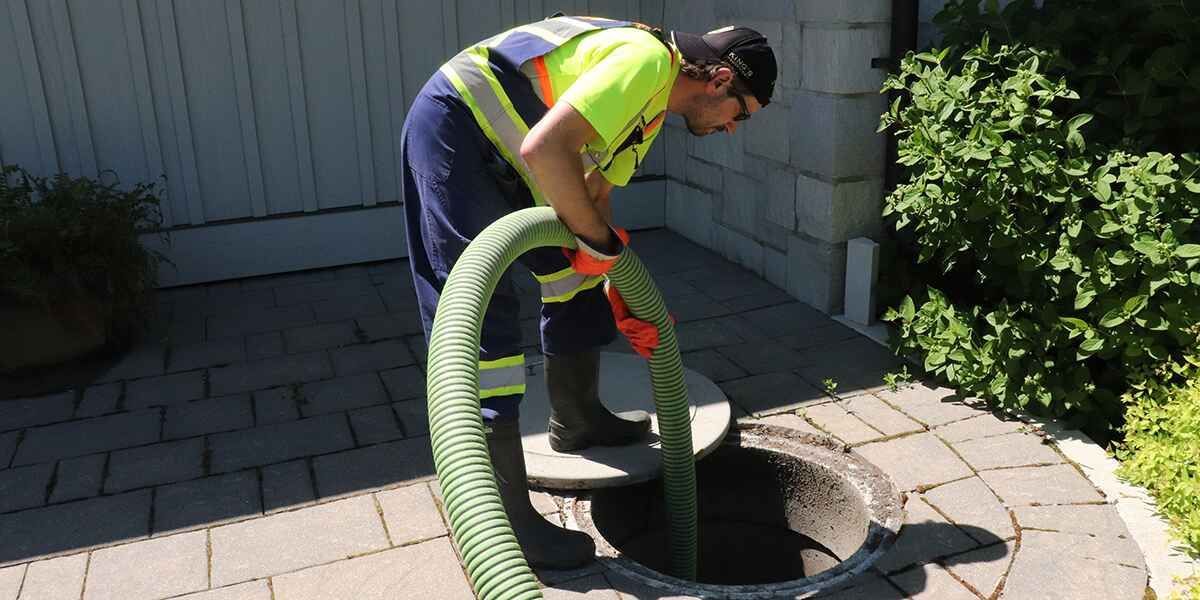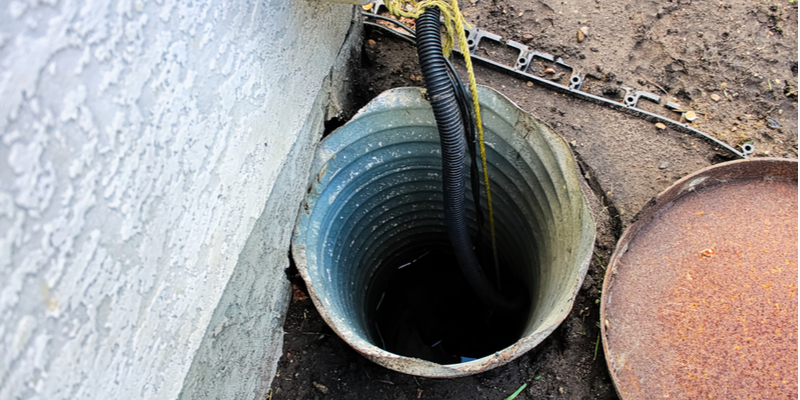The publisher is making several good points on Cleaning & Maintenance Tips for Your Home's Sump Pump overall in this content underneath.

Sump pumps are critical elements in lots of homes, especially in areas vulnerable to flooding or too much wetness. They help protect against water damage by successfully getting rid of excess water from basements or crawl spaces. However, like any other device, sump pumps require normal maintenance to guarantee they operate properly when needed one of the most. Cleaning your sump pump is an essential part of its maintenance, and recognizing exactly how to do it effectively can conserve you from costly repair work and possible calamities.
Intro
Preserving a clean sump pump is vital for its correct functioning and long life. Overlooking this essential task can lead to blockages, breakdowns, and inevitably, water damage to your home. Therefore, learning exactly how to clean up a sump pump is critical for homeowners that count on these gadgets to maintain their basements completely dry and protected.
Indications of a Dirty Sump Pump
Knowing when your sump pump needs cleaning is important for avoiding prospective breakdowns. Some common indications that indicate an unclean sump pump consist of weird sounds throughout operation, reduced water flow, and noticeable debris in the pit. If you notice any of these symptoms, it's important to clean your sump pump quickly to avoid any additional concerns.
Planning for Cleansing
Before you start cleaning your sump pump, it's important to take some security preventative measures. Begin by turning off the power to the pump to prevent any type of electrical mishaps. Furthermore, put on ideal protective equipment, such as handwear covers and safety glasses, to secure yourself from dust, particles, and potential microorganisms.
Recognizing the Sump Pump
Prior to diving into the cleaning procedure, it's important to have a basic understanding of exactly how a sump pump functions. Generally mounted in a pit or basin below the basement flooring, a sump pump contains a number of vital components, consisting of a pump, a float switch, and a discharge pipe. When water gathers in the pit, the float button activates the pump, which then pumps the water out via the discharge pipeline, far from the building's foundation.
Step-by-step Overview to Cleaning a Sump Pump
Turning off the Power
Begin by detaching the power supply to the sump pump to avoid any type of accidents while cleaning.
Looking For Correct Performance
Prior to reinstalling the pump, perform a quick examination to make certain that the float button turns on the pump appropriately. Pour some water into the sump pit and observe the pump's operation. If every little thing is functioning appropriately, you can reconstruct the pump and reconnect the power supply.
Getting Rid Of Particles and Dirt
Make use of a pail or an inside story to get rid of any visible debris, dust, or sediment from the sump pit. Dispose of the particles properly to avoid it from obstructing the pump or the discharge pipeline.
Cleaning up the Pump and Float Change
When the pit is free from particles, very carefully get rid of the pump from the pit. Check the pump and the float switch for any signs of damages or wear. Make use of a soft brush or fabric to clean up the surface areas and get rid of any collected crud.
Flushing the System
After cleaning the pump and float button, flush the sump pit with tidy water to remove any kind of staying dust or debris. This will help make certain that the pump operates efficiently and effectively.
Upkeep Tips to Keep Your Sump Pump Clean
In addition to routine cleaning, there are a number of maintenance pointers you can follow to keep your sump pump in optimal problem:
- Normal Evaluation: Inspect your sump pump regularly for any signs of wear, damage, or obstructions.
- Keeping the Surrounding Location Clean: Guarantee that the area around the sump pit is devoid of debris, dirt, and obstructions.
- Testing the Pump Periodically: Evaluate your sump pump regularly by pouring water right into the pit and observing its operation. This will certainly help you determine any kind of possible problems prior to they escalate.
Final thought
Cleaning your sump pump is an important aspect of its maintenance and guarantees that it runs effectively when you need it the most. By following the actions detailed in this overview and incorporating routine upkeep into your routine, you can expand the life-span of your sump pump and safeguard your home from water damages.
6 STEPS ON HOW TO CLEAN A SUMP PUMP PROPERLY
UNDERSTANDING SUMP PUMPS
Your sump pump plays a crucial role in protecting your home by managing and removing excess water. It primarily functions as a “shield”, guarding your basement against the damaging effects of water accumulation. The pump is housed in a sump pit in the lowest part of your basement, and its job is to pump out any water that collects there.
During heavy rainfalls or when snow melts rapidly, water can infiltrate your basement, posing potential risks like flooding, structural damage, and harmful mold growth. Here, the sump pump springs into action, pumping out the intruding water and directing it away from your home.
SAFETY FIRST
Before cleaning, remember to prioritize safety. Disconnect the sump pump from the power source to prevent any accidental electric shocks. Also, wear sturdy gloves to protect your hands from any sharp or dirty components within the pump.
REMOVE THE SUMP PUMP
After ensuring your safety, the next step is to remove the sump pump from its pit. Doing this might require careful maneuvering as you don’t want to damage any pump components. Once removed, clean the sump pit to remove any accumulated debris or sludge.
INSPECT THE PUMP
Inspect the pump for any visible signs of wear or damage. Check the power cord, float switch, and impeller housing. If any components look worn out or damaged, consider replacing them to ensure optimal performance.
CLEAN THE PUMP
Thoroughly clean the pump with warm, soapy water. Make sure to rid it of any dirt, gravel, or other debris that might impede its performance. You can use a toothbrush to clean the small, hard-to-reach parts of the pump.
REINSTALL THE SUMP PUMP
- Reinstall the pump into the sump pit
- Make sure it’s positioned correctly to remove the water effectively
- Once it’s back in place, reconnect it to the power source
TEST THE PUMP
Finally, pour some water into the pit to ensure the pump works correctly. It should start automatically and begin pumping out the water; if it doesn’t, check the power source and the positioning of the pump.
Remember, while cleaning your sump pump is an essential part of home maintenance, hiring a professional plumber for a thorough inspection and cleaning at least once a year is also important. This will ensure that your pump is in optimal condition, ready to protect your home from potential water damage.
BEST PRACTICES FOR CLEANING SUMP PUMP DISCHARGE PIPES
- Regular Inspection: Regularly inspect your discharge pipes, especially during heavy rainfall or snowmelt periods. Look for any signs of blockage or damage. Early detection of problems can prevent serious issues down the line.
- Periodic Cleaning: Over time, sediment and debris can accumulate in the discharge pipes, impeding the flow of water. Regular cleaning helps keep the pipes clear and functioning efficiently. You can use a high-pressure water jet to effectively clean the pipes.
- Insulation During Winter: In colder climates, discharge pipes can freeze, blocking the outflow of water. Protect your discharge pipes from freezing temperatures by insulating them with foam pipe insulation. This will ensure the sump pump can continue to discharge water even in freezing conditions.
- Proper Positioning: The discharge pipe should be positioned to direct water away from your home’s foundation. Improper positioning can lead to water seeping back into the basement. Ensure the pipe is long enough and angled correctly.
- Installation of a Check Valve: A check valve prevents water from flowing back into your sump pit after the pump has pushed it out. Installing a check valve helps maintain the efficiency of your sump pump and reduces the risk of flooding.
- Minimize Pipe Turns: Every curve or turn in the discharge pipe can decrease the efficiency of water flow. By minimizing turns and bends in your discharge pipe, you can increase the efficiency of your sump pump.
https://www.fullspeedplumbing.com/how-to-clean-a-sump-pump-properly9999/

As an enthusiastic person who reads about Steps to Cleaning Your Sump Pump Properly, I imagined sharing that piece of content was a good thing. Liked our piece? Please quickly share it. Help someone else locate it. Thanks a lot for going through it.
Schedule Estimate
Comments on “Handy Tips for Caring for a Sump Pump”